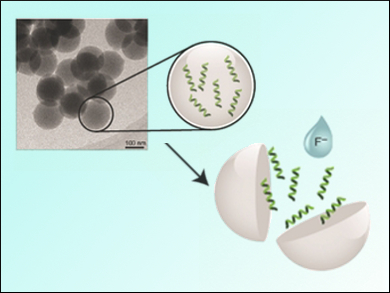Ribonucleic acid (RNA) has manifold functions: it is not only the intermediate between genetic information and proteins, but also shows enzymatic activity, as well as regulation of protein function and gene expression. RNA is a pivotal element in any research in life sciences, but unfortunately it is a very labile molecule: a free hydroxy group on the ribose unit allows self-hydrolysis of the RNA strand. Additionally, RNAases cleave the phosphodiester bond. These enzymes are very stable and literally found everywhere, for example, in dust or on our skin. Hence, storage of RNA without degradation is almost impossible.
Robert N. Grass, ETH Zurich, Switzerland, and colleagues used silica encapsulation to facilitate robust RNA storage. Commercially available silica particles are modified with N-trimethoxysilylpropyl-N,N,N-trimethylammonium (TMAPS) to obtain a positively charged surface. Negatively charged RNA rapidly binds to this surface. The RNA is subsequently encapsulated by a sol-gel-process with tetraethylorthosilicate as a silicon source.
Inside such particles, RNA is resilient against hydrolysis. After release from the particles, the RNA does not exhibit any constraints in downstream applications.
- Silica Microcapsules for Long-Term, Robust, and Reliable Room Temperature RNA Preservation,
Michela Puddu, Wendelin J. Stark, Robert N. Grass,
Adv. Healthcare Mater. 2015.
DOI: 10.1002/adhm.201500132




